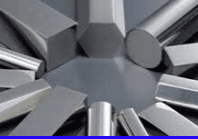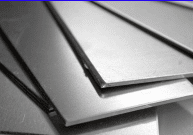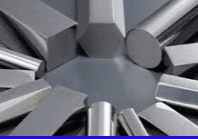Stainless steel 316



Stainless steel 316
316 stainless steel is available in various forms, including round, flat, square, and hexagonal shapes, and tubes.
316L is a low carbon-chromium-nickel-molybdenum austenitic stainless steel known for its good strength and exceptional corrosion resistance. Supplied in the annealed condition with a typical Brinell hardness of 175, it demonstrates high resistance to corrosion in marine and industrial environments. Additionally, it offers excellent resistance to chloride attack and sulfur compounds commonly found in pulp and paper processing industries.
The addition of 2% to 3% molybdenum enhances its resistance to pitting corrosion and improves creep resistance at high temperatures. Its low carbon content reduces the risk of intergranular corrosion during welding, minimizing the need for post-weld annealing. Furthermore, it exhibits good oxidation resistance at elevated temperatures.
316L cannot be hardened through thermal treatment, but its strength and hardness can be significantly increased through cold working, albeit with reduced ductility.
Nowadays, 316L is available with improved machinability achieved through calcium injection treatment. This enhancement has minimal impact on corrosion resistance and weldability while greatly improving machining efficiency, extending tool life, and allowing for higher speeds.
It finds extensive use in marine, chemical, pulp and paper, textile, transportation, manufacturing, and related industries. Typical applications include architectural components, textile equipment, pulp and paper processing equipment, marine fittings, photographic equipment, and X-ray equipment.
In its annealed condition, 316L stainless steel is non-magnetic, though it may become mildly magnetic after heavy cold working. Annealing can rectify this, if necessary.
Note: Optimal corrosion resistance is attained in the annealed condition.
Related Specifications |
|
| Australia | AS 2837-1986-316L |
| Germany | W.Nr 1.4404 X2CrNiMo17 13 2 W.Nr 1.4435 X2CrNiMo 18 14 3 |
| Great Britain | Bs970 Part 3 1991 316S11/316S13 |
| Japan | JIS G4303 SuS 316L |
| USA | ASTM A276-98b 316L SAE 30316L AISI 316L UNS S31603 |
Chemical Composition
| Chemical Composition | ||
| Min. % | Max % | |
| Carbon | 0 | 0.03 |
| Silicon | 0 | 1.00 |
| Manganese | 0 | 2.00 |
| Nickel | 10.00 | 14.00 |
| Chromium | 16.00 | 18.00 |
| Molybdenum | 2.00 | 3.00 |
| Nitrogen | 0 | 0.10 |
| Phosphorous | 0 | 0.045 |
| Sulphur | 0 | 0.03 |
Mechanical Property and Heat treatments
| Mechanical Property Requirements - Annealed to ASTM A276-98b 316L | |||
| Finish | Hot Finish | Cold Finish | |
| Dia or Thickness mm | All | Up to 12.7 | Over 12.7 |
| Temsile Strength Mpa Min. | 485 | 620 | 485 |
| Yield Strength Mpa Min. | 170 | 310 | 170 |
| Elongation in 50mm % Min. | 40 | 30 | 30 |
| Typical Mechanical Properties At Room Temperature - Annealed | |||
| Finish | Cold Drawn | Other | |
| Tensile Strength Mpa | 680 | 590 | |
| Yield Strength Mpa | 500 | 280 | |
| Elongation in 50mm % | 42 | 55 | |
| Impact Charpy V J | 190 | 180 | |
| Hardness | HB | 195 | 155 |
| Rc | 13 |
General Corrosion |
| 316L has better resistance to general corrosion in most media than 310, 304, 321, 302 and 303 grades. |
Stress Corrosion Cracking |
| 316L demonstrates superior resistance to stress corrosion cracking in chloride solutions compared to 302 or 304 grades. However, it can still experience failure under high stress conditions in environments conducive to stress corrosion. |
Pitting Corrosion |
| 316L exhibits greater resistance to pitting corrosion compared to non-molybdenum-bearing grades like 304, 321, 310, and 303, among others. |
Intergranular Corrosion |
| 316L, characterised by its low carbon content, offers superior resistance to intergranular corrosion compared to all austenitic stainless steel grades, except for 304L and 321 titanium. |
Crevice Corrosion |
| 316L offers increased resistance to crevice corrosion compared to non-molybdenum-bearing grades such as 304, 321, 310, and 303, among others.
Note: It's crucial to ensure that oxygen can freely circulate on all stainless steel surfaces to maintain a protective chromium oxide film. Failure to do so may result in rusting, similar to non-stainless steels. For optimal corrosion resistance, surfaces should be free of scale and foreign particles, and finished parts should undergo passivation. |
Forging
- Heat the material uniformly to a temperature range of 1150°C to 1200°C, ensuring uniformity throughout the section.
- Avoid forging below 900°C.
- Allow finished forgings to cool naturally in the air.
- Finally, anneal the forgings to achieve optimal corrosion resistance.
Heat Treatment |
Annealing |
| Heat the material to a temperature range of 1020°C to 1100°C, ensuring uniformity throughout the section. Allow the part to soak as needed to ensure thorough heating throughout its section. A guideline for soaking time is 30 minutes per 25 mm of section thickness. After heating, quench the material in water to achieve optimal corrosion resistance. For best results, consult your heat treater. |
Machining |
|
The improved machinability of 316L is slightly more challenging compared to the improved machinability of grade 304. It presents greater difficulty in machining than the free machining grade 303 and most of the 400 series stainless steels. Its typical machinability rating is approximately 50% to 55% of free machining (S1214) mild steel.
|
Welding
Welding |
| 316L stainless steel is easily weldable using shielded fusion and resistance welding methods, followed by air cooling, resulting in good toughness. However, oxyacetylene welding is not advised due to the potential for carbon pickup in the weld area.
The low carbon content in 316L enables it to be welded without sacrificing corrosion resistance due to intergranular carbide precipitation. Generally, post-weld annealing is not necessary, except for applications in more extreme conditions. |
Welding Procedure |
| Welding should be carried out using 316L or *similar electrodes or rods (depending upon application). No pre-heat or post-heat is generally required.
*Please consult your welding consumables supplier. |
